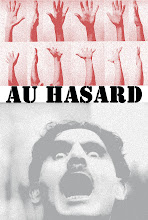Peter Weiss, author of Marat/Sade, on reading Dante (from The Aesthetics of Resistance):
The Divina Commedia was as unsettling, as rebellious, and in form and theme apparently as remote from anything familiar as was Ulysses...What was happening here, we had been wondering since the
summer of this year after starting our trip into the strange upside-down dome sunken into the earth, with its circles coiling deeper and deeper, trying to take an entire lifetime, whereas after the complete passage they promised ascent, likewise in rings, to heights beyond imagining. We had come no further than Francesca da Rimini...Forging ahead from the linguistic imprecisions, the smoothened metaphors, the lost rhythms and melodies of the outer layer and plunging into the internal dynamics of an everlasting fire, we felt things awakening within us, experiences we had never known about,
laid out inside us and now made operative only through poetry...we tried to break every association down thoroughly into its components, but the conversations about the forest that we entered with the
wanderer lasted for weeks, and later we often harked back to them, aware of having grasped only a few motifs of that canto. The depiction of the overall enterprise ran simultaneously with the motion of
groping one's way toward a specific place that could not be found in the world of perceptions and whose entrance and forecourt were described as concretely as the dark woods with their animals, their
topographic features, and their light slowly oozing forth. The opening lines already made it sound as if anything portrayed here could not really be expressed in words and images, and as the impossible then
moved from verse to verse, section to section, in a consistent articulation steadily accompanied by marginal numbers, knitting together into a stable, harmonious unity that could not be pictured in
any other way, it clarified the triumph of the imagination over chaos, misguidance, and absolute certainty. It revealed not only the path into the spiritual structure of the inferno, where the raw material of an epoch concentrated into a subjective vision, but also the step into the mechanism of artistic labour. The approach to art was linked to the thought of death. The writer of the poem found himself at the mid-point of his life, yet in his work he had not only put himself in the hands of a dead man, he encountered only the dead. Upon setting out he had placed himself in the vicinity of death, he was still breathing, but filled with demise, he contained the mirroring of those who now possessed nothing, and thus, in pondering what they had given him, what survived in him alone, when he penetrated the regions in which as was natural, at most only his skeleton could be found, he
felt as if he too were perishing. We could compare the start of the journey to somnolence, we were familiar with the abrupt sagging of something within reach, the start of a dream, the moments when the grab-hook dangling from the crane might hit your skull, the drive belt of the machine might rip off your arm, or at night, at dawn, when you could not tell whether the room you were in was part of a dream or whether the dream pounced on your room, and in this intermediate stage, cloaked by heavy fatigue yet able to see and hear something, searching for thoughts to transform surfacing palpable things into objects, he put letters on paper...








